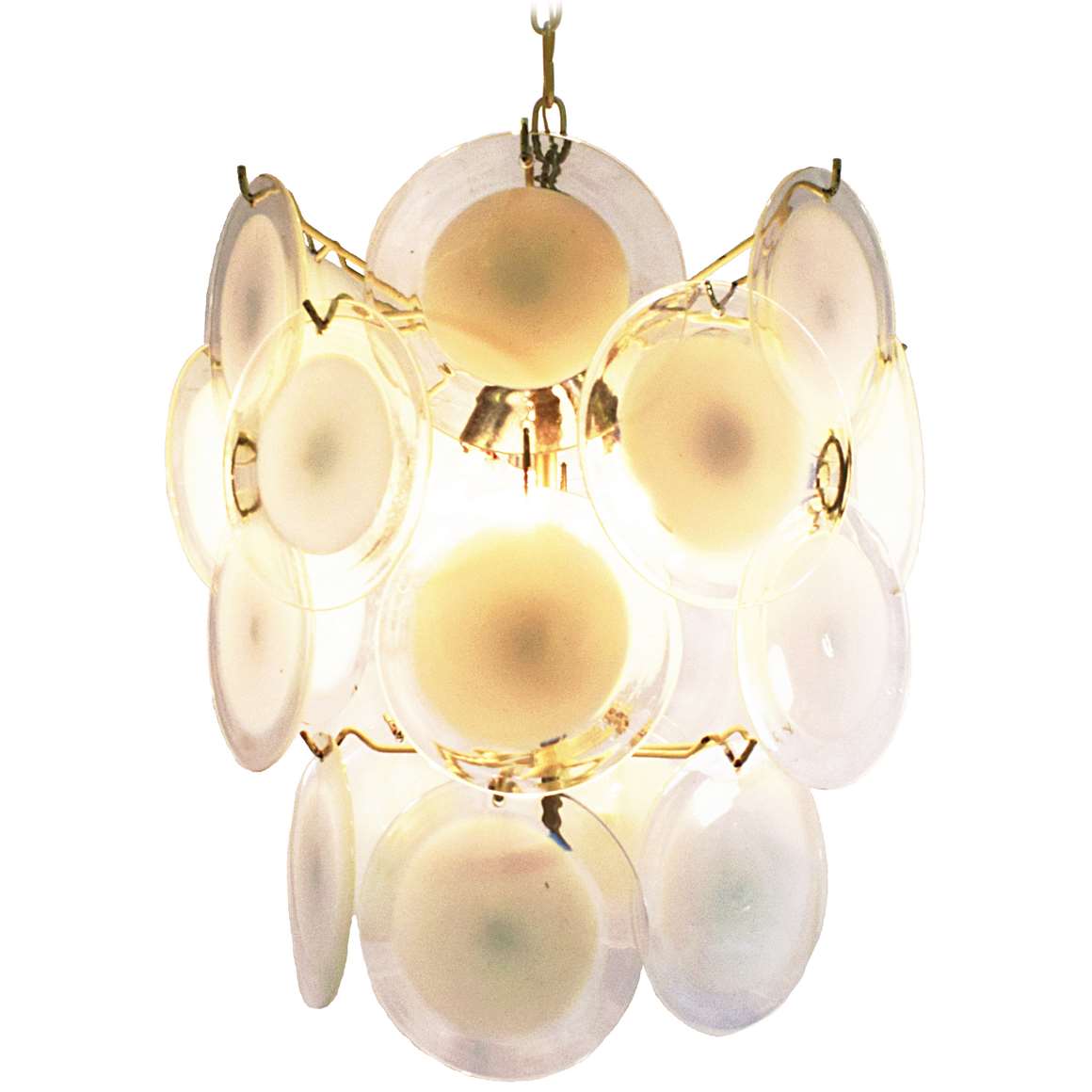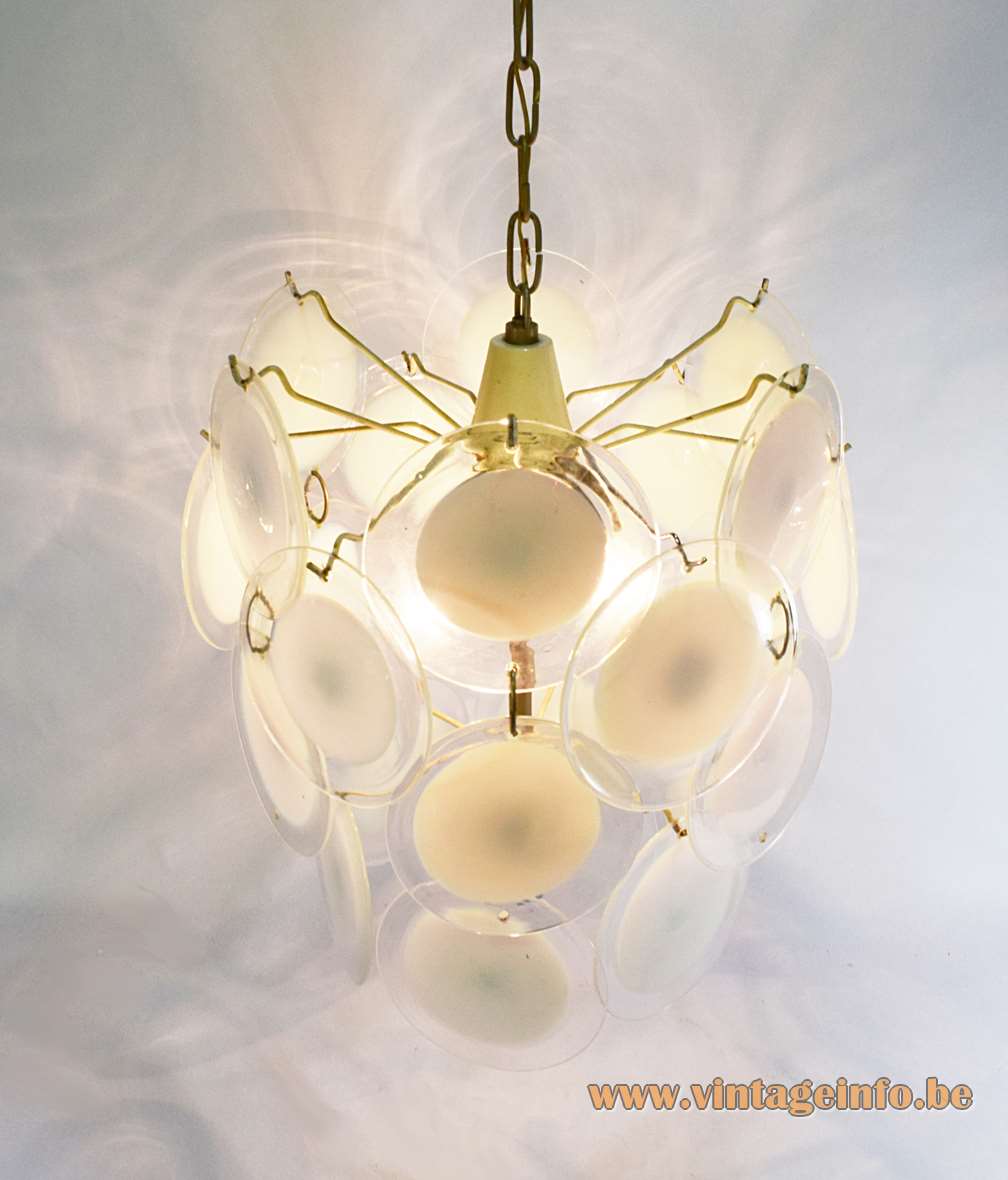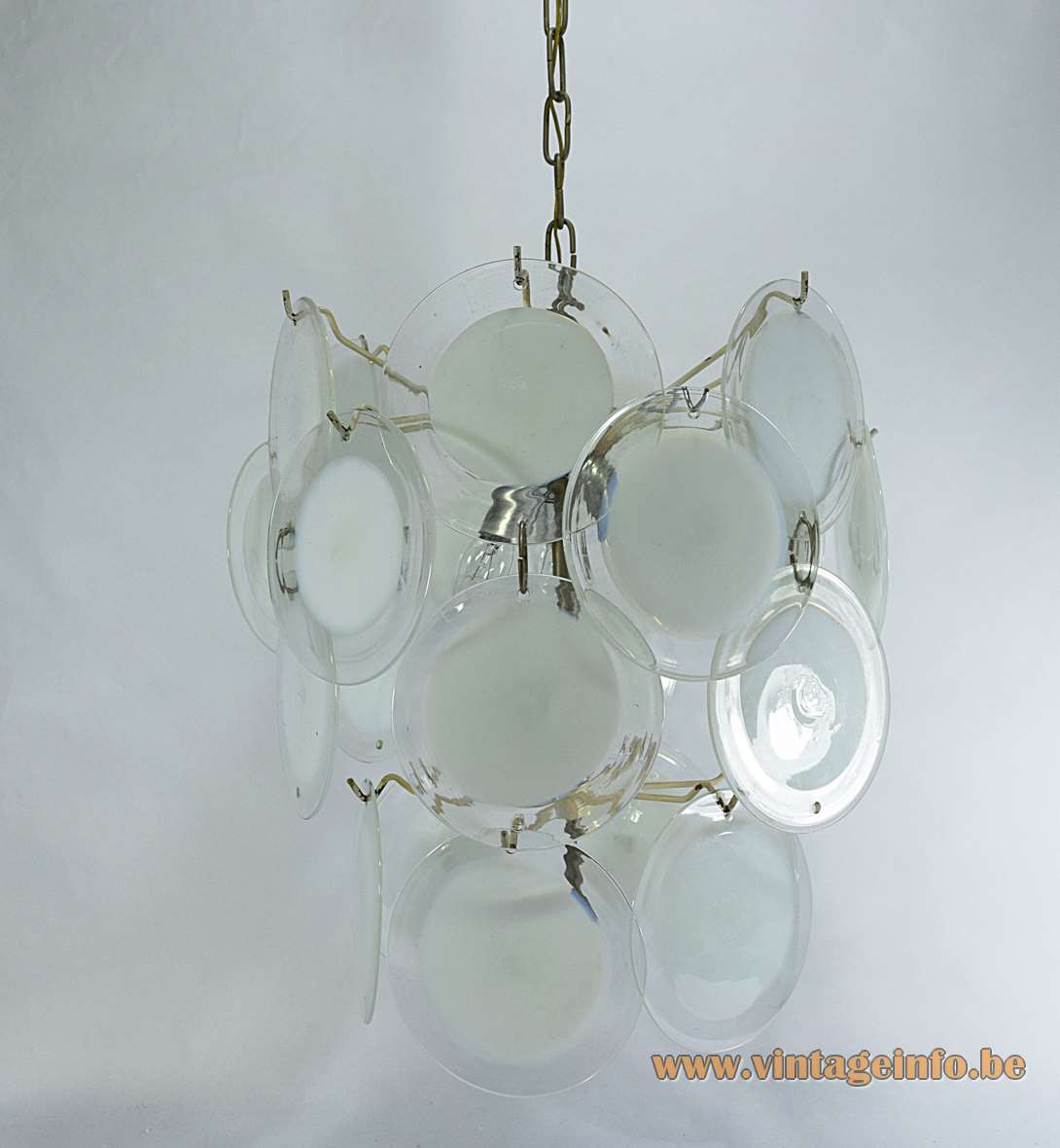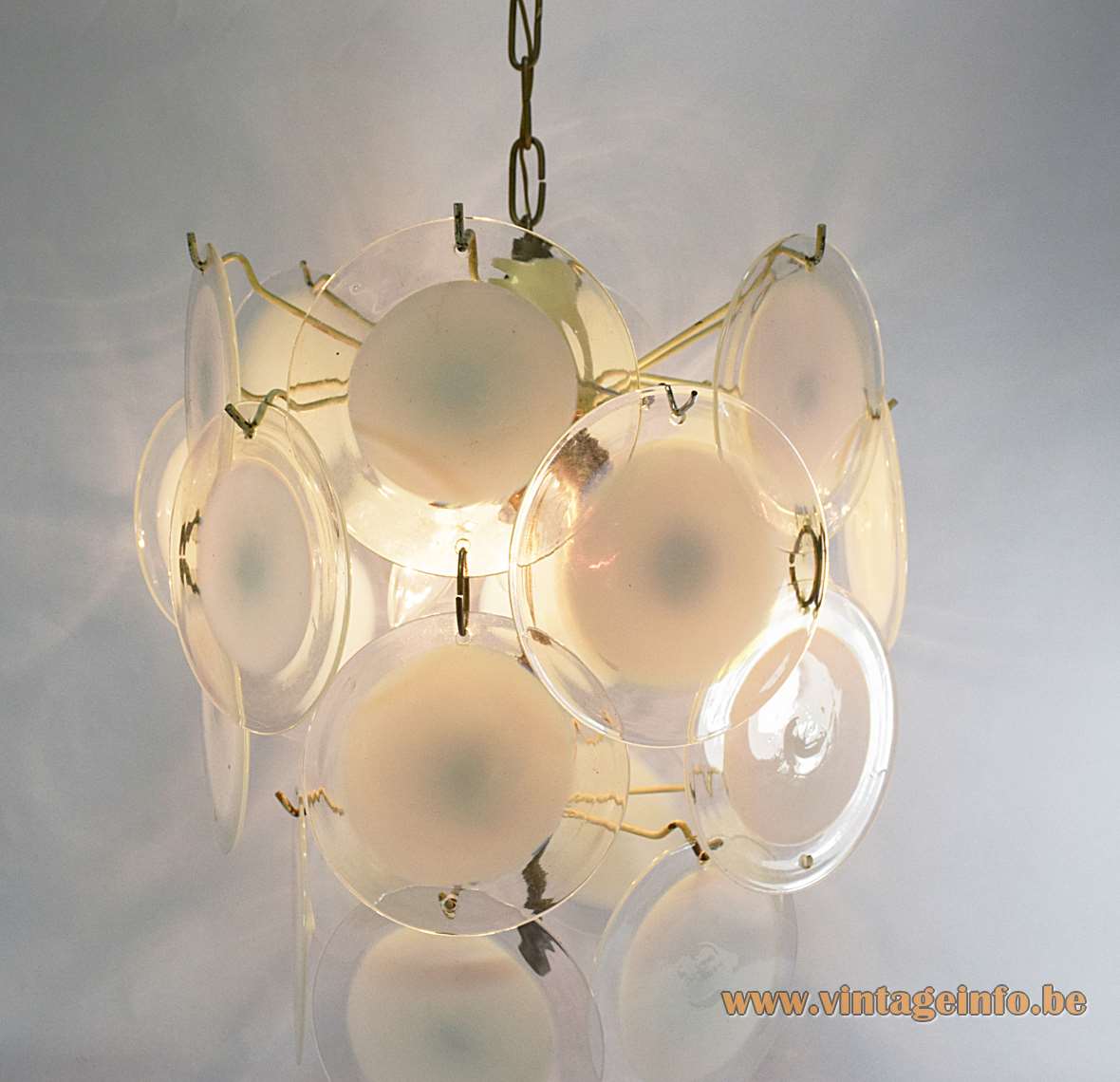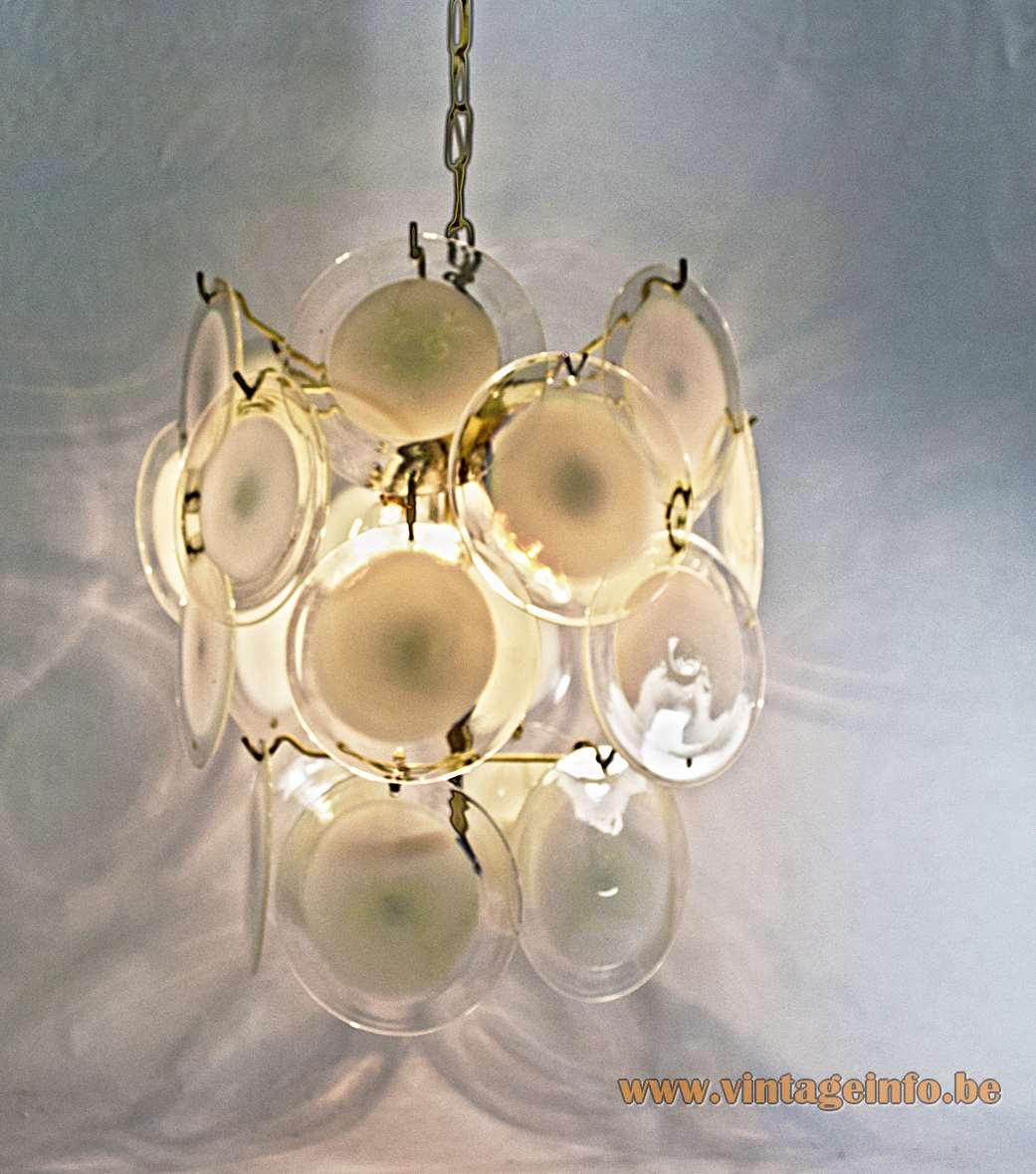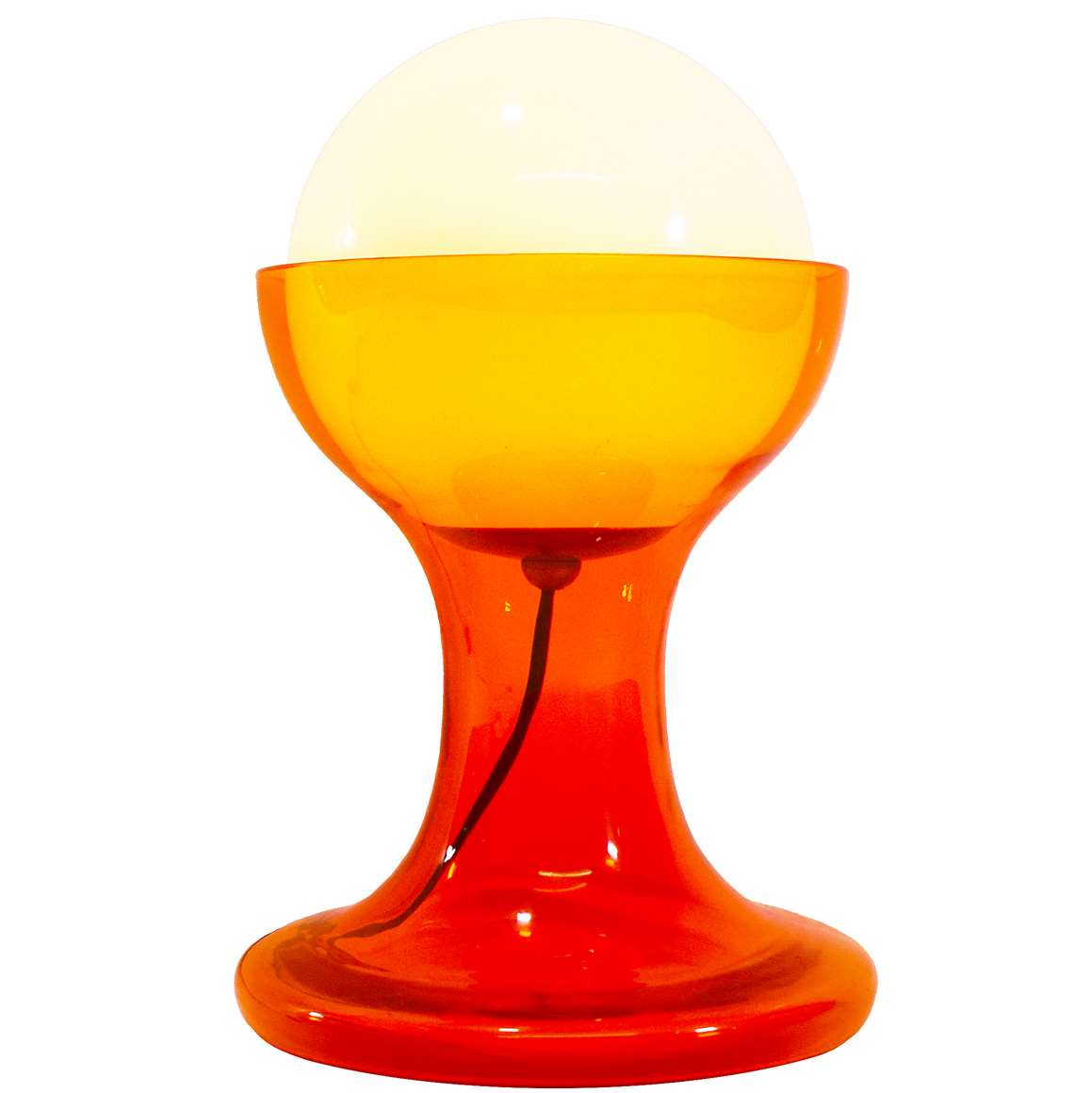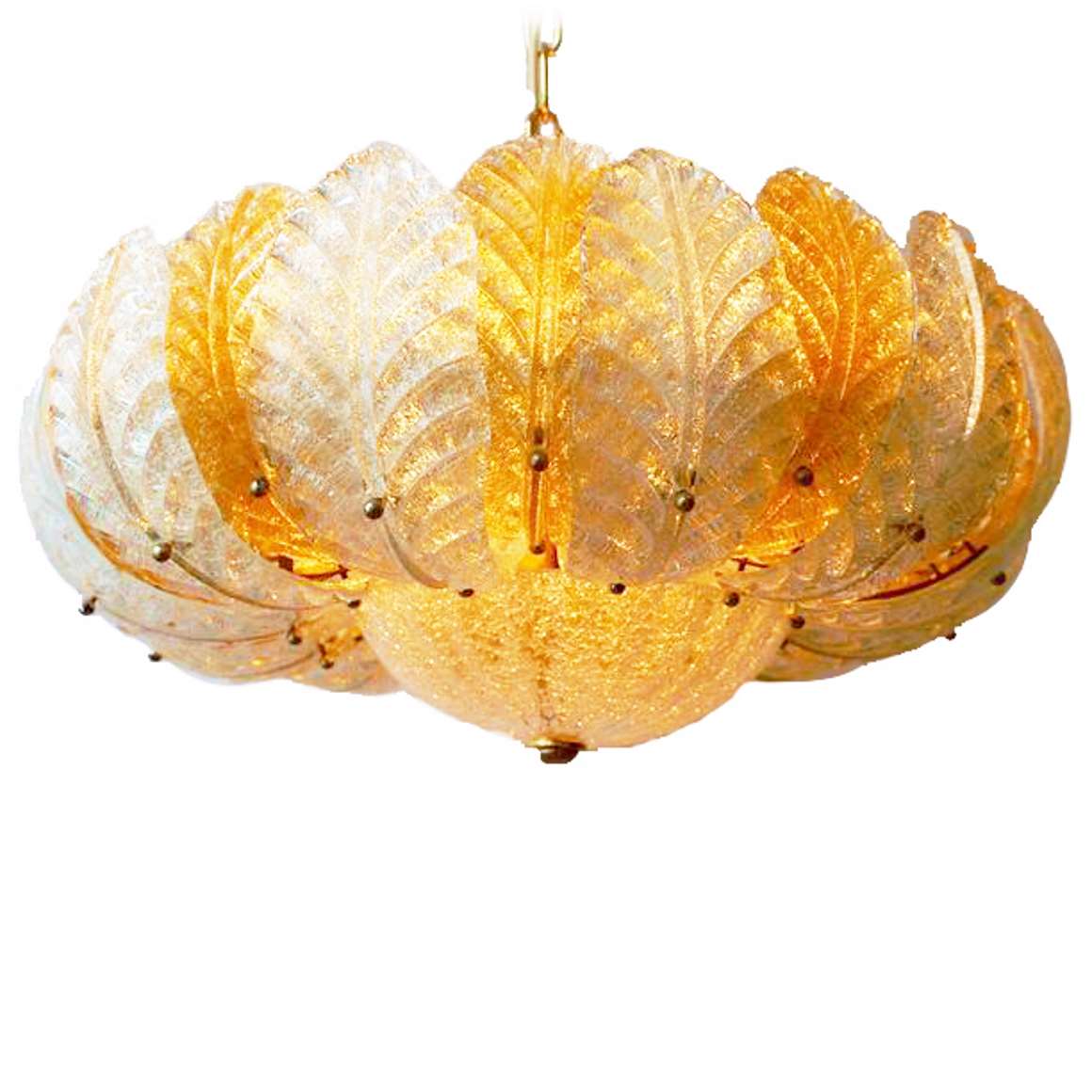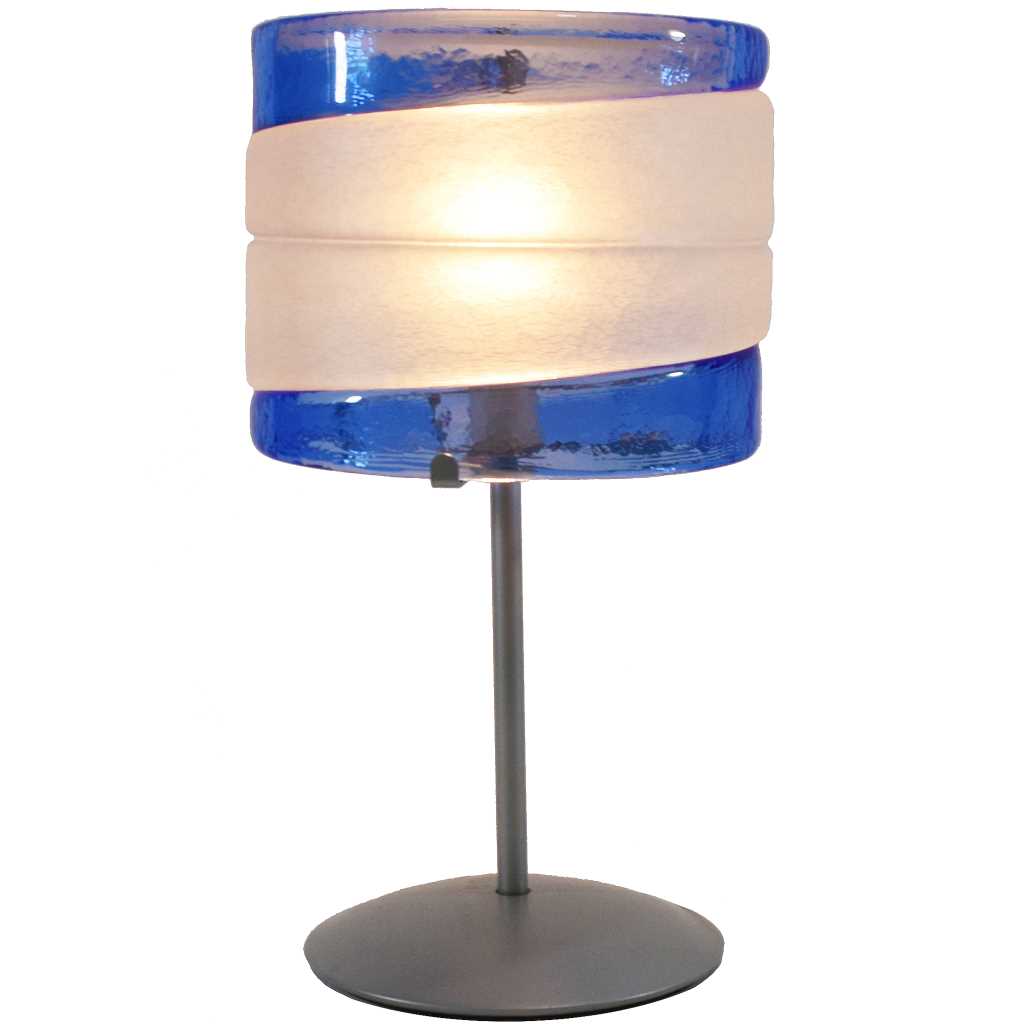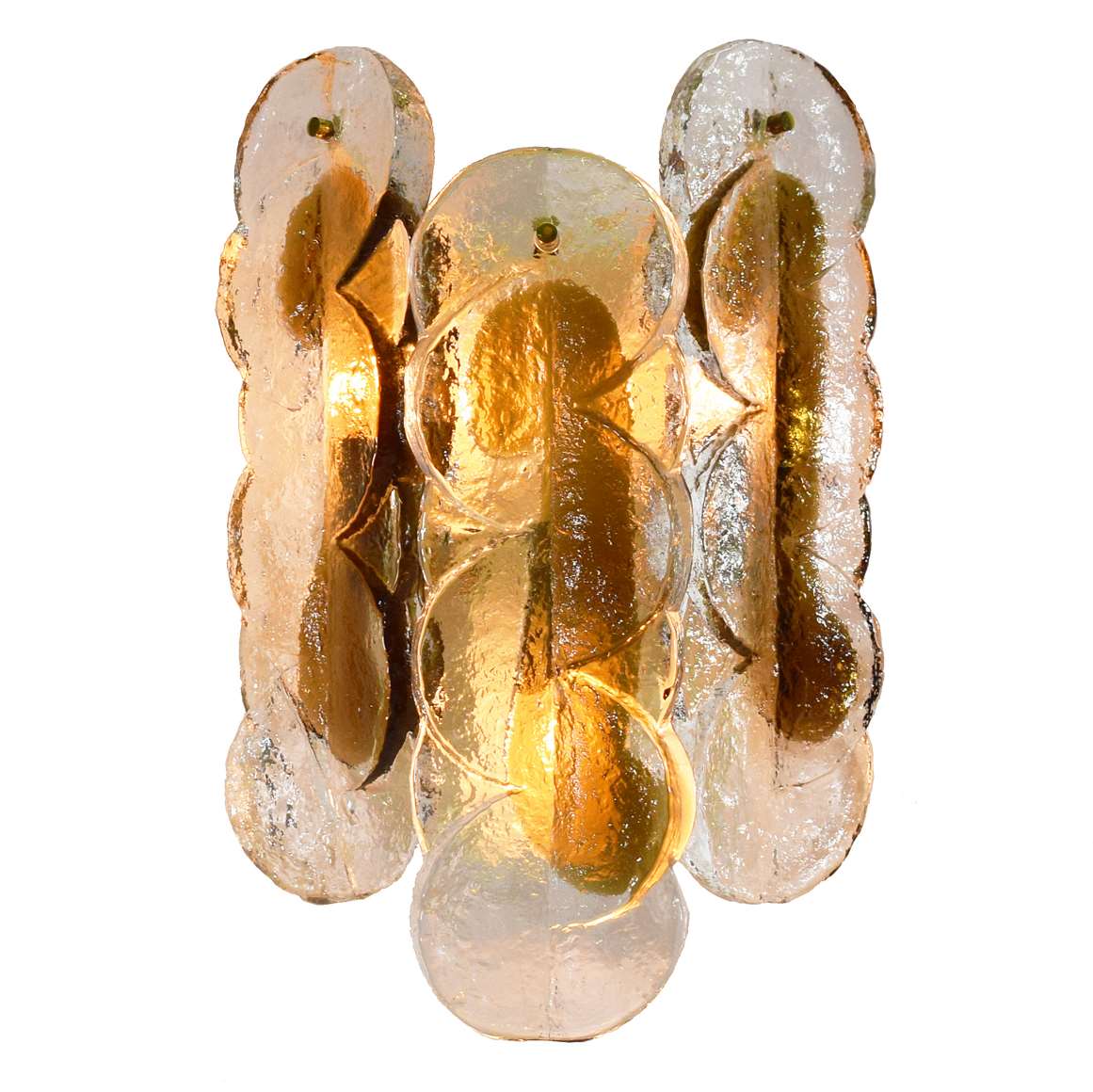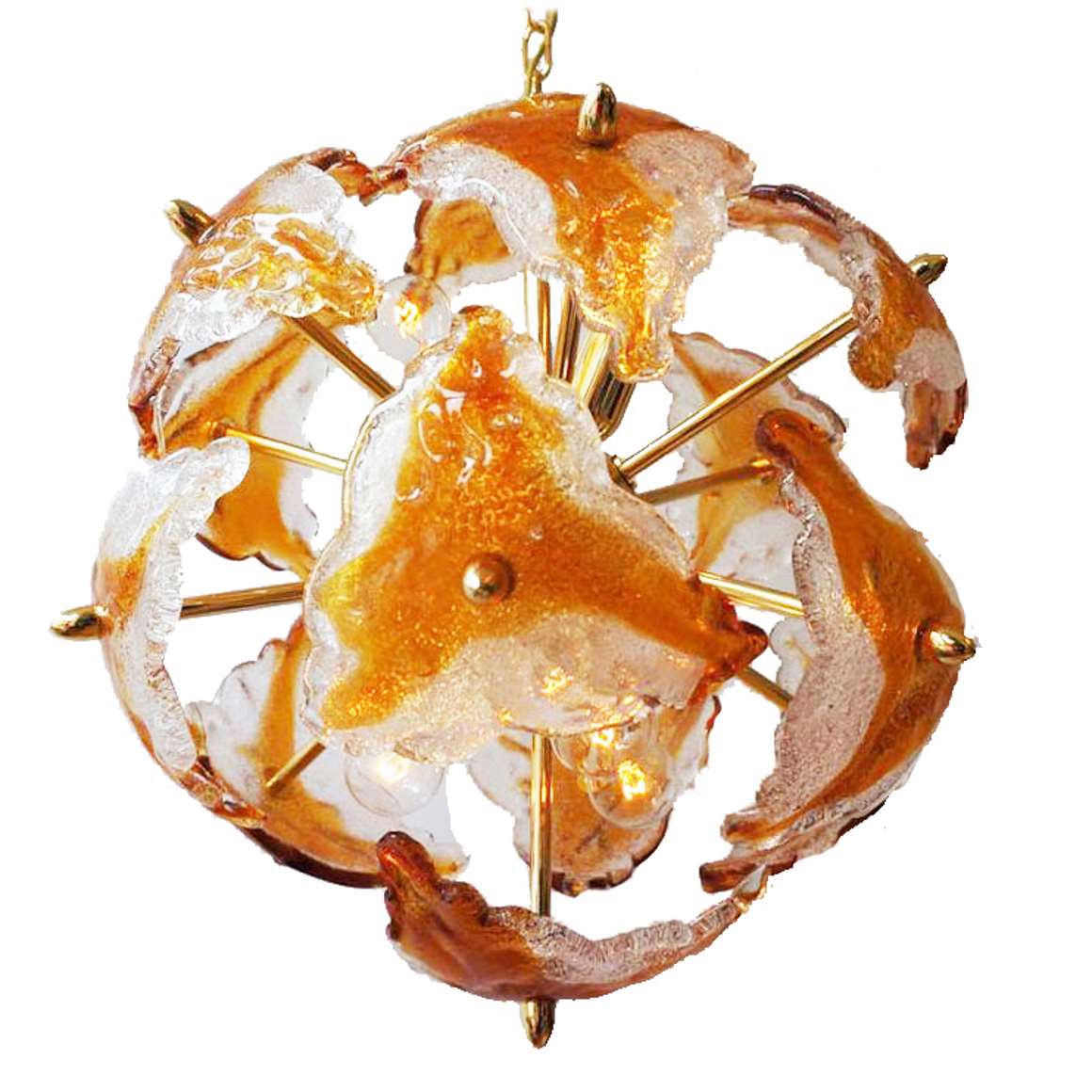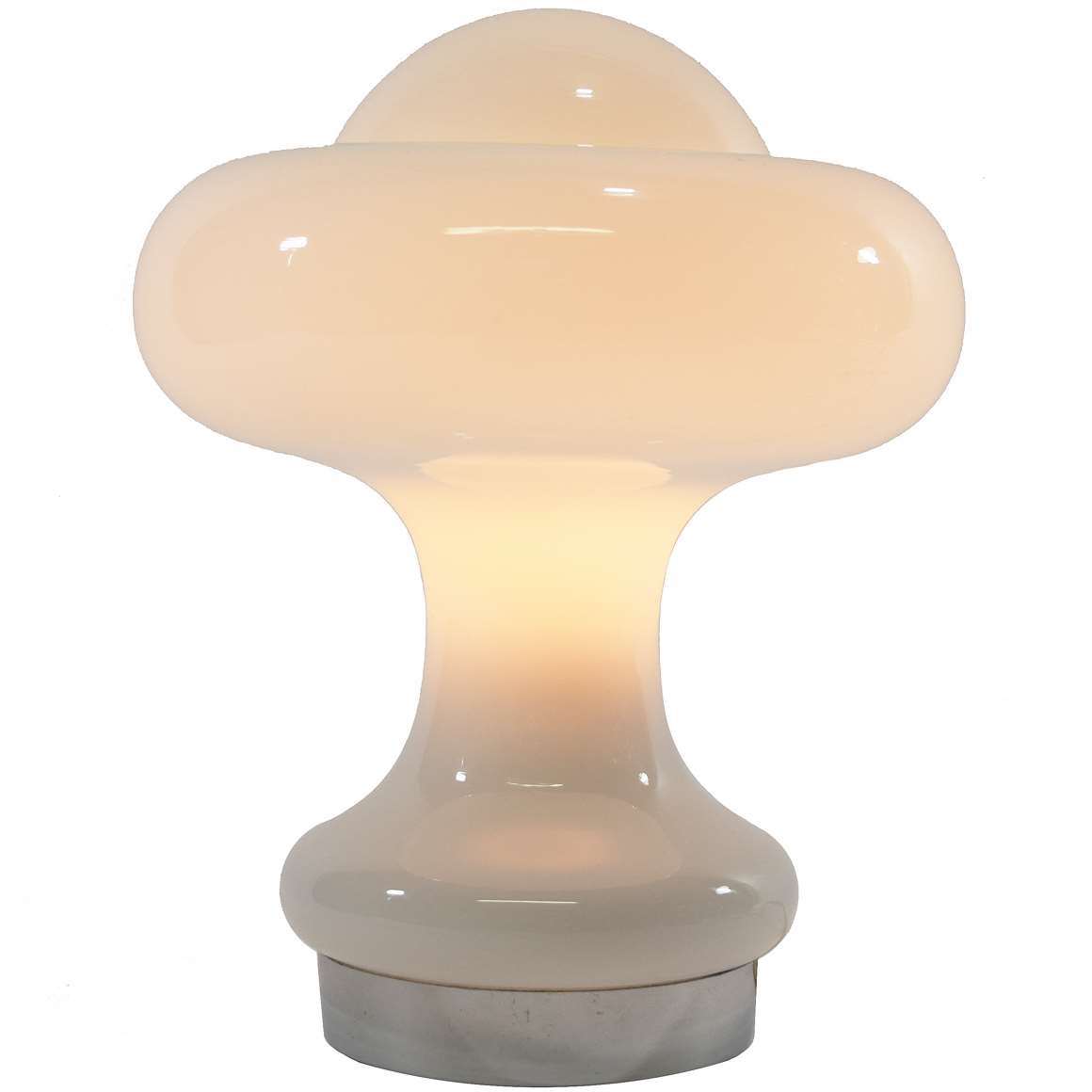Links (external links open in a new window)
Murano glass blowing – Wikipedia
Mazzega 1946 – (AV Mazzega)
Vintageinfo
Smoked cut glass discs chandelier
24 White Discs Murano Chandelier
Materials: 24 hand blown white and translucent crystal Murano glass discs. Metal chromed (iron) wire frame. Chrome chain and canopy. Bakelite E14 sockets.
Chain Length: 60 cm / 23.62’’
Height: 45 cm / 17.71”
Width: 40 cm / 15.74”
Electricity: 3 bulbs E14, 3 x 60 watt maximum, 110/220 volt.
Any type of light bulb can be used, but clear or bright bulbs are preferred.
Period: 1950s, 1960s, 1970s – Mid-Century Modern.
Designer: To be appraised.
Manufacturer: To be determined.
Other versions: This 24 white discs murano chandelier was made in many different sizes and colours. Made with more or less discs, as a wall lamp, a flush mount and a table lamp.
Gino Vistosi – Carlo Nason
Contrary to popular belief, Gino Vistosi was not the designer of these large disc chandeliers. However, he did design a related model in the mid-1960s: the Torcello chandelier. This design featured oval discs in textured glass, produced in several colours. They were in production until the 1980s. The name Torcello refers to one of the earliest inhabited islands in the Venetian lagoon, often described as the mythical birthplace of Venice. A catalogue picture can be found over here.
On the island of Murano, and beyond, many lighting manufacturers – most of them now long gone – also produced disc chandeliers in this style. The discs were the same size as those designed by Carlo Nason for AV Mazzega. Nason ’s models included the LS 130, LS 131, LS 132, and LS 133 chandeliers, all executed in clear and opaline iridescent glass. (You can see an authentic example here in a catalogue image)
These chandeliers became a major success and remained in production for more than 30 years. Today, similar designs are still being produced — so be cautious if you are looking for a genuine vintage example.
Murano Glass Lamps
Murano has long been synonymous with the finest glassmaking in the world. Beyond vases, sculptures, and decorative objects, the island’s glassmakers also became pioneers in lighting design.
From the 1950s through the 1980s, Murano workshops produced a wide variety of glass lamps: table and floor lamps, wall sconces, and chandeliers in countless forms. Some were delicate and traditional, others bold and modernist, but all carried the unmistakable quality of Venetian craftsmanship.
The uniqueness of Muran o lighting lies in the mastery of techniques passed down through generations: sommerso layering, murrine patterns, avventurina sparkles, and refined crystal-clear glass. Combined with the imagination of Italian designers, these skills transformed simple glass into luminous works of art.
It is important to note that only lamps made on the island of Murano itself can rightfully be called “Murano glass.” Factories in nearby towns or on the mainland often produced very similar models, sometimes almost indistinguishable in style, but those pieces are not authentic Murano creations. Just one village further, and the result is merely “Murano style.”
